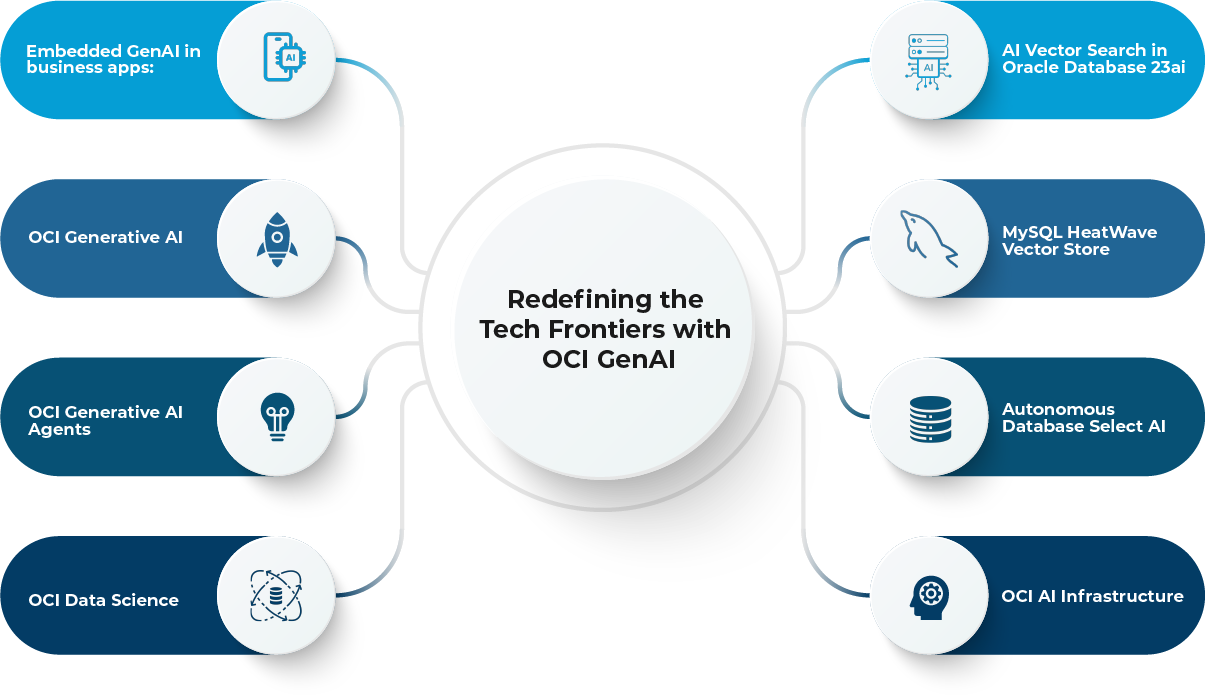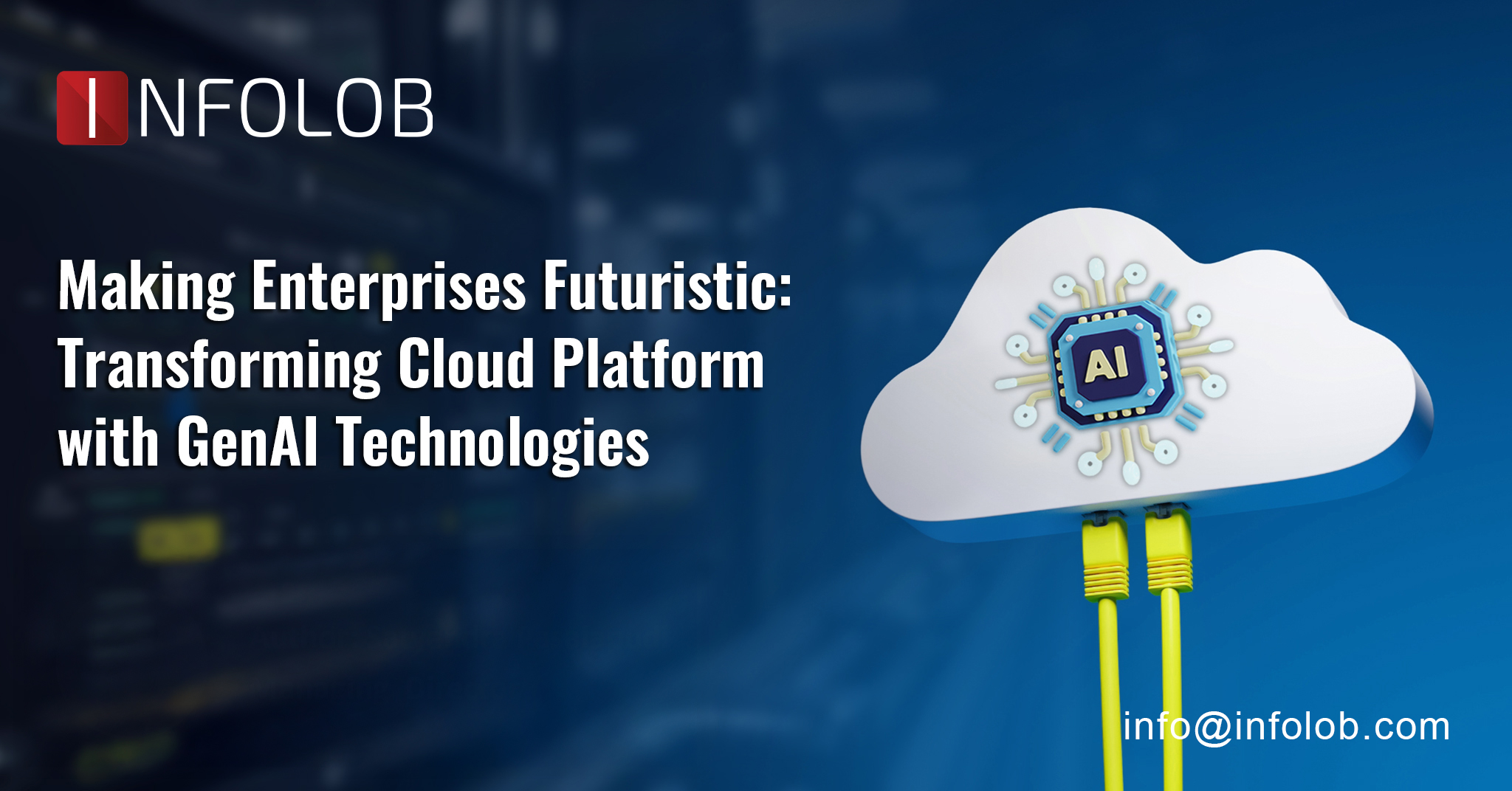The enterprises have seen the wonders that technology can do, especially the capabilities that Artificial Intelligence (AI) has. Evolved in 2022, Generative AI (GenAI) has unleashed many potential opportunities and proved how enterprises can spearhead their technological innovations, standing not on the competitive edge but on the innovation edge.
Fostering unparalleled growth through discovery of awe-inspiring features in the cloud-based and other applications, Generative AI is seen as a transformative enforcement across enterprise applications.
Given the challenging scenarios in IT industry such as disruptions, vulnerabilities, or cyber-attack vectors, GenAI’s beyond the horizon safety and protection has taken security by storm, leveraging overall application security wherever they are deployed. However, in cloud-centric environments, GenAI’s integral features made the enterprises realize how it’s simplifying the most complex configurations and customizations. In the current scenario, GenAI unfolds new form innovations for which investments continue to rise, roles are redefined, and efficiency enhances as it augments human capabilities like never before.
However, integrating GenAI in the futuristic roadmap is more of a strategic imperative than just a supporting technological view. This enables leaders to drive their cloud-based applications with GenAI features, expanding the growth curve and innovation space.
In this article, my research propagates how GenAI can become a capability integrator for all your applications, what are the promising aspects that LLMs can bring, and how integration with microservices fosters exceptional business value.
RAG, LLMs, and GenAI – Redefining Tech Frontiers with Capabilities Beyond

The start of 2023 has shown an incredible investment around GenAI and LLMs technologies but as a year passed by, RAG (Retrieval-Augmented Generation) has begun to evolve, and enterprises are looking forward to integrating RAG-feature into their cloud ecosystem so that a search engine powered by high-potential AI can automate a lot of features inside a cloud environment. And flexibility is not as compromising as it seems for a cloud environment or even for a cloud service provider.
Keeping the challenges with RAG and other LLMs integration in mind, INFOLOB’s research wing has been a successor of introducing these into Oracle Cloud where they perform tasks at high speeds, simplifying overall operational lifecycle. In this Gen-AI players’ landscape, Oracle Cloud has rapidly paced up above the competition, releasing a set of powerful GenAI tools for enterprises. OCI offers following GenAI tools and services to multiply your business value:
- Embedded GenAI in business apps: Entire Oracle Cloud applications have GenAI capabilities where no interface or app changes are needed. Gain GenAI-driven outcomes over a unified platform.
- OCI Generative AI: Fine tune and manage Cohere and Meta foundational models via APIs and integrate them across any cloud resource and use cases.
- OCI Generative AI Agents: Embrace the powerfulness of GenAI and RAG using your enterprise data to gain the latest information and accurate responses from diverse knowledge bases.
- OCI Data Science: Customize LLMs with open-source libraries such as Hugging Face’s Transformers, PyTorch, and other generative models from Meta or Mistral AI. OCI has provided the freedom to build, deploy, and manage all these customized LLMs for everyone so that they can be designed as per business needs.
- AI Vector Search in Oracle Database 23ai: Now semantic search capabilities are at the upfront and running inside your databases that run using AI vectors. Any business search or semantic data are precision-driven, and all the data is managed by a single database.
- MySQL HeatWave Vector Store: Fetch vector embeddings from user questions and documents that are stored in MySQL HeatWave Lakehouse to LLMs and watch the GenAI generated accurate responses that pave the way for enhanced customer experiences.
- Autonomous Database Select AI: Select AI understands natural language questions simply and hence, it’s deployed in applications and analytics to generate Oracle SQL to query data.
- OCI AI Infrastructure: Access bare metal instances by NVIDIA GPUs and high-performance computing instances. These are also used in training LLMs or customizing workloads as per business demands.
Looking at these GenAI integrations on OCI, it’s clear that the cloud is leveraging to drive next-level of innovation while bringing huge transformations across the enterprise.
Transformative Use Cases of GenAI in Cloud Ecosystem
After working with my research team, the new and latest features of GenAI on Oracle Cloud have surprised me. Hence, the transformative potential of LLMs extend beyond just automation; they assist enterprises in integrating with ERP applications, optimizing performance to a greater extent, and driving exponential growth. In my experience, I have seen the power of LLMs in many business use cases. Here are a few:
Supply Chain Optimization: Ensuring the proper inventory levels in regional warehouses for a global business is critical for supply chain industries. Even occasional challenges lead to stockouts. Now, AI integration into their cloud gathers all the information on a global scale including transactional history, sales at the specific region, delivery schedules etc. Inside Oracle ERP powered by GenAI’s capabilities, it shows a holistic view for enterprises that helps them to take better decisions, get a holistic view of inventory levels, and the quantities of delivery to the locations needed. Also, AI assists in generating reports automatically by capturing historical data in addition to resolving customer queries on parallel.
Re-innovation of Procurement: From examining the historical data to detecting patterns for future demand, LLMs serve greatly to understand market changes, adapt to them, reduce costs, and drive overall efficiency by re-innovating within procurement wing.
Financial Services: Unfortunate scenes of fraud and fortunate work of verification are two common activities in BFSI sector. Manual checking of documents, scanning through fake documents, or depositing of stolen cheques, etc., are a few challenges that they encounter. Oracle Fusion Cloud Financials has powerful AI features, interprets scanned documents, authenticates identification materials (licenses, national ID cards, etc.,) and compares information against a large model to detect fraudulent targets. In short, fraud detection is fast and reliable with minimal chance of disruption. GenAI-enabled automation facilitates risk-assessment review in seconds within the timelines needed to satisfy banking regulations and process data at faster rates.
Health Sciences: Given the huge volumes of pharmaceutical data available, GenAI works in collaboration with researchers to find the specific information, summarize it, and generate a contextual representation of how the data is related to the research work. Using data mining inside its vector database, GenAI shows the risks associated with a particular drug, how far research on medicine can be done, and the effectiveness of a medicine along with side effects are clearly predicted.
The GenAI use cases mentioned above are just the tip of an iceberg because the possibility of innovative algorithms and RAG’s extreme capabilities go beyond all these. And as we progress to research around its capabilities, Oracle + INFOLOB has achieved a milestone by integrating ultimate features that help enterprises to build transformative and innovative edges.
Integration of Multi-Agent LLMs with Microservices
Microservices-based architectures will prosper to the next-level with LLM features, mapping to specialized tools via APIs and operate specific set of tasks that will be deployed on the go. As users begin to use their cloud environment, LLMs understand the intent and the context – taking over control through their agents to perform required functions while finishing the tasks rapidly.
Soon, LLMs will change the way enterprises operate on cloud making it more flexible, intuitive, and efficient. However, the roadmap towards user-friendly LLM-driven application adoption has just begun, where the possibilities open greater avenues for large language models themselves.
As my exploration on GenAI has given me a holistic view of how this disruptive technology is controlled and regulated, it also can accelerate time-to-market for cloud-based applications while bringing intangible business benefits to enterprises that rely on cloud and LLMs.
Futuristic Roadmap – LLMs and RAG for Cloud Centralized Enterprises
As we look to the horizon, the combination of LLMs and Retrieval-Augmented Generation (RAG) presents a compelling vision for the future of cloud-centralized enterprises. RAG enhances LLMs by incorporating a retrieval mechanism that sources relevant information to augment the generation process, resulting in more accurate and contextually relevant outputs.
INFOLOB envisions a future where enterprises leverage RAG on OCI to revolutionize their data ecosystems. This synergy will enable enterprises to:
- Enhance Decision-Making: By integrating RAG, enterprises can provide decision-makers with precise, contextually enriched information, leading to more informed and timely decisions.
- Optimize Operations: Automating complex workflows with RAG-enhanced LLMs will streamline operations, reduce costs, and improve efficiency across the board.
- Drive Innovation: The continuous feedback loop enabled by RAG will foster an environment of perpetual learning and innovation, allowing enterprises to stay ahead of industry trends and technological advancements.
For enterprises ready to embark on this transformative journey, INFOLOB stands as a trusted partner, providing the insights, tools, and expertise necessary to thrive in the era of next-gen cloud solutions. Let us help you turn the tide and set sail towards a future where possibilities are limitless.
For all queries, please write to:





